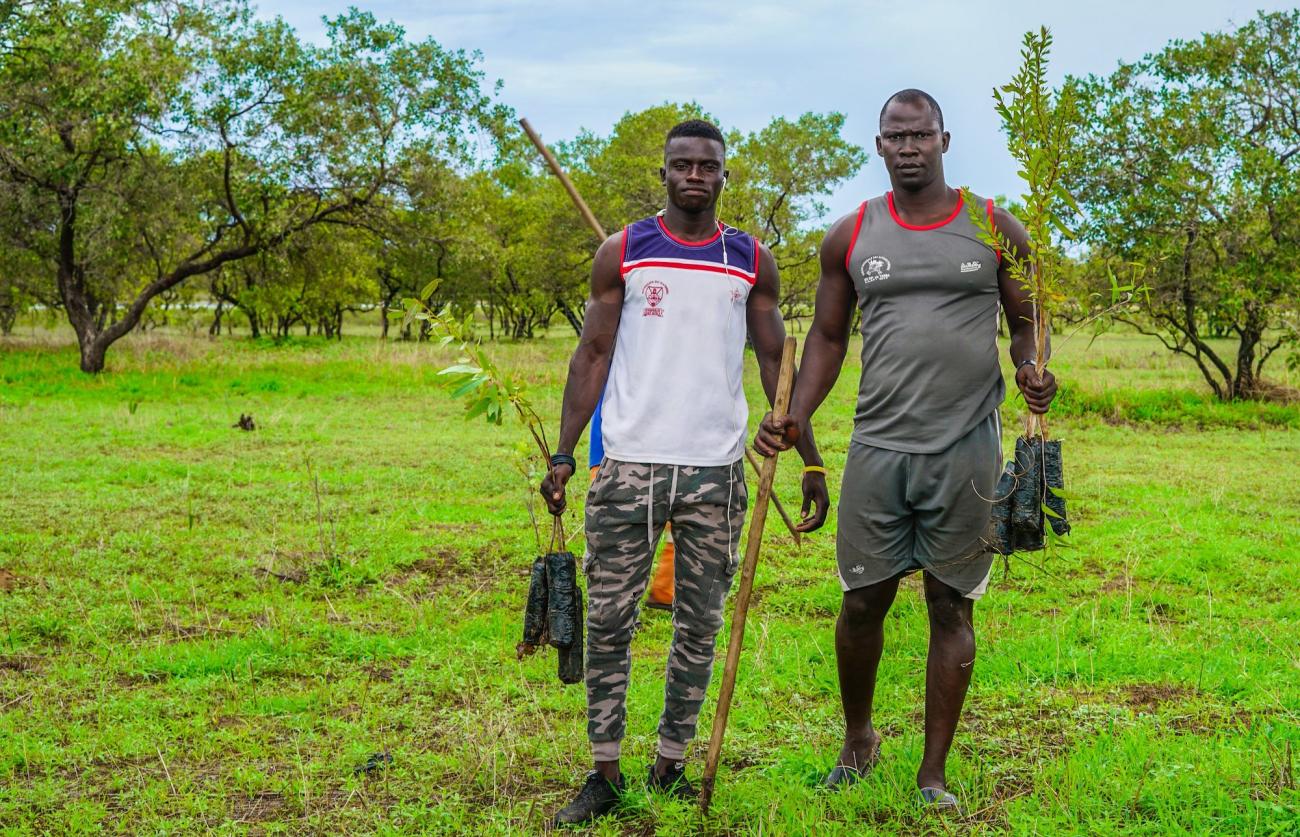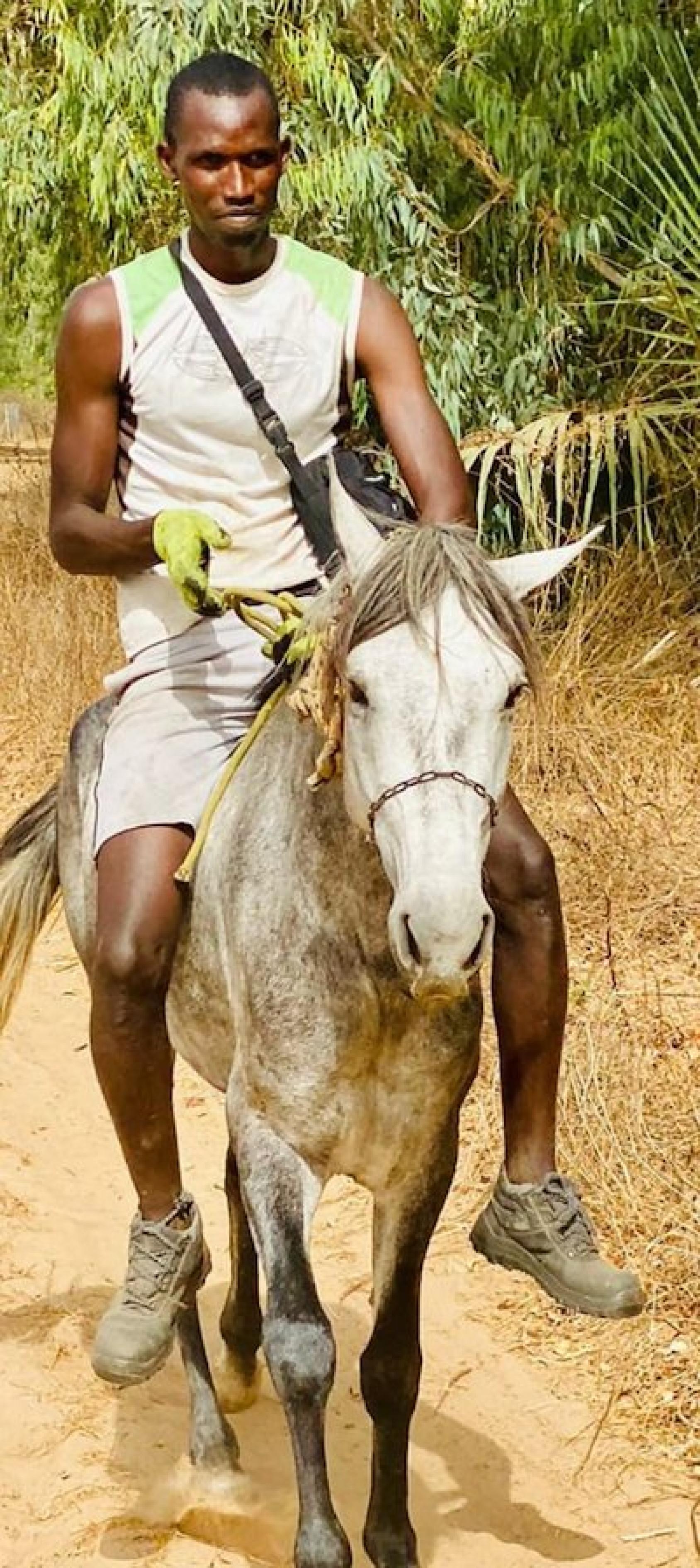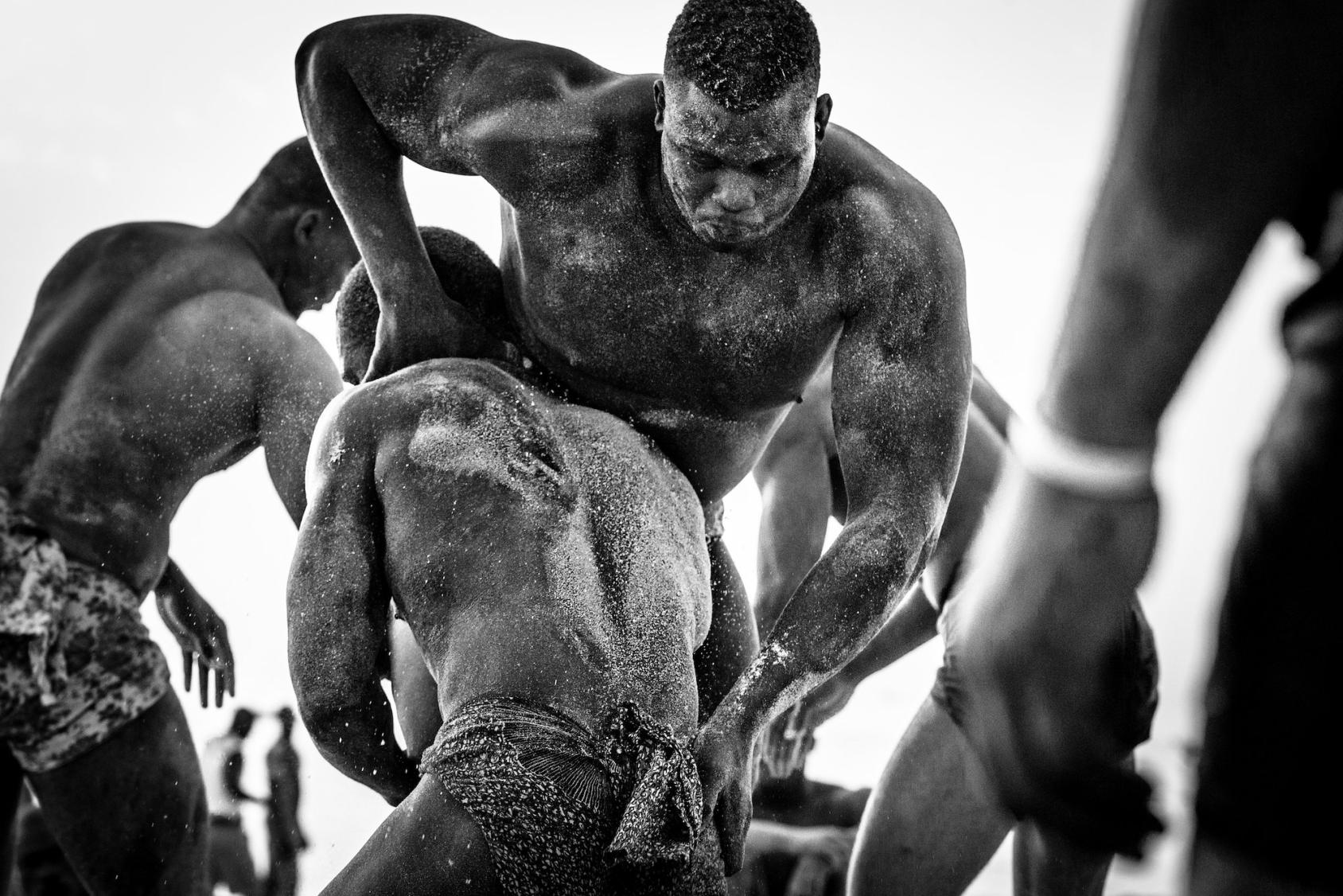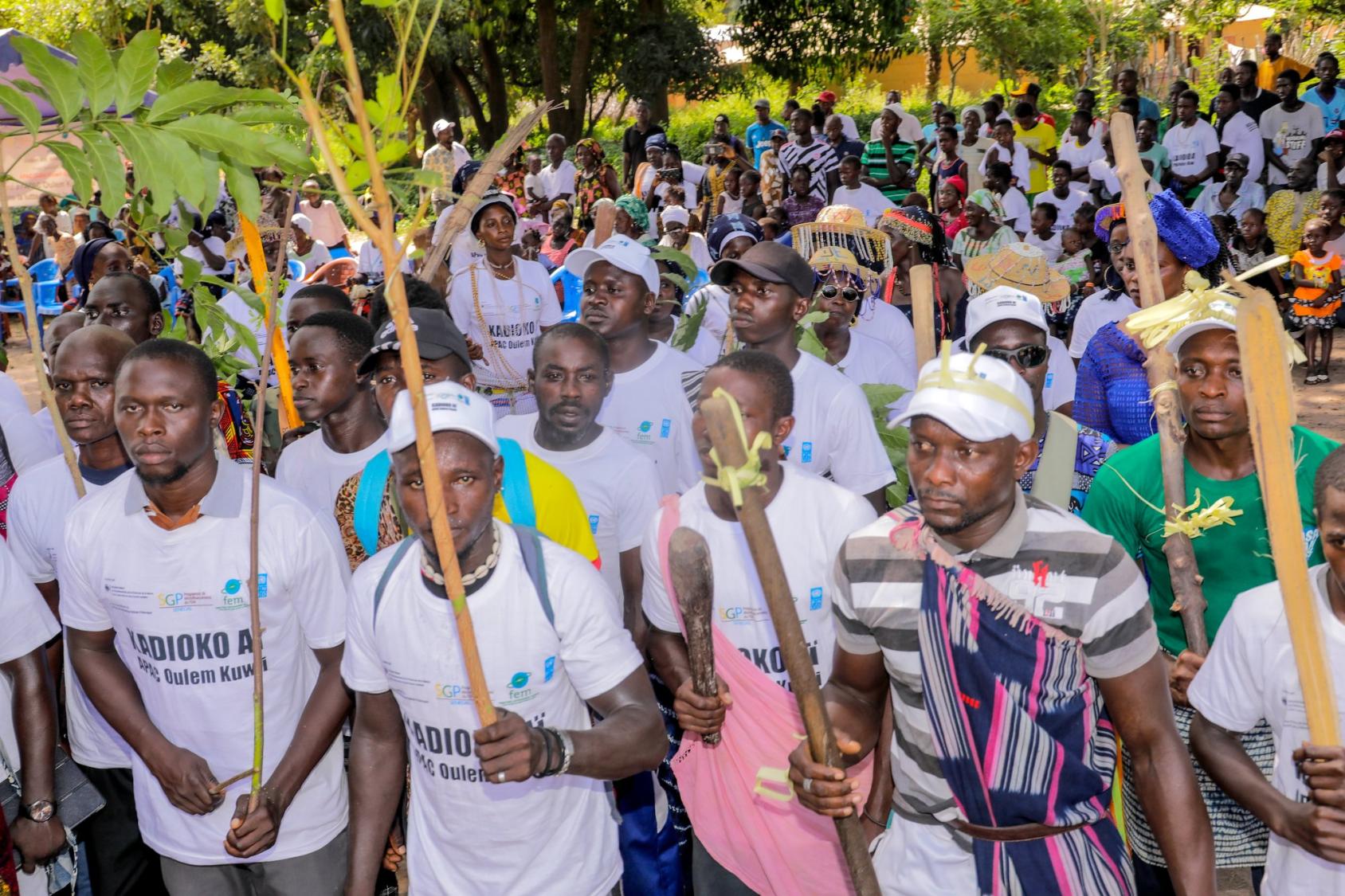From Wrestling to Reforestation: Senegal's indigenous youth safeguard nature

Charles Gorgui Diagne lives in the Djilor Djidiack village in Senegal where the forest of Kollou Ndigue is located.
Charles is the Secretary General of the Association for Village Development and an active member in the reforestation of the Indigenous peoples’ and Community Conserved territories and Area (ICCA) of Kollou Ndigue.
He organizes the youth of his village - leading tree-planting campaigns, advocating for traditional medicine, and actively guarding their forest. As a leader, he appreciates the value of inter-generational connections.

According to Charles, “In African culture in general and Serer culture in particular, ancestral practices are transmitted and perpetuated from generation to generation.”
One such practice is traditional Senegalese wrestling.
The art of wrestling
Senegalese wrestling dates back to the 14th century and began with the Serer people. Elders of the village orally pass down instructions on the art of wrestling. From father to son, and now as young women have begun to join their male counterparts, from father to daughter, traditional wrestling is taught to youth in special schools during their initiation into adulthood.
Traditional wrestling is an important part of Senegal’s cultural heritage; it is a manifestation of tribal memberships and social groups and serves as a sign of the vitality of a particular community. It is also one of the country’s national sports. The practice, however, is increasingly being forgotten as people turn to more modern and professional variants.
The training schools also bring together people from different communities, and thus, traditional wrestling allows for friendly encounters between neighbouring villages.
In Charles's village, wrestling also serves as a valuable entry point for protecting biodiversity.
As Charles notes, “These are practices we have a duty to ensure their continuity by transmitting them to other generations because as the poet president Léopold Sédar Senghor said ‘culture is at the beginning and at the end of any development process.’”

From generation to generation and not just for boys
Originally wrestling exhibitions were part of harvest festival celebrations, and helped determine who the strongest man in the community was. Now women are also joining in – women like Isabelle Sambou.
Named African wrestler of the decade, Isabelle has been victorious in multiple African tournaments, and represented Senegal in the Olympics in London and Rio de Janeiro.
From an early age, many indigenous youths are taught by their parents and communities how to participate in activities that maintain the fine balance between nature and human needs.
Valuing cultural diversity and biodiversity - and the full expression of life's evolutionary potential - go hand in hand.
For Charles, he appreciates how these inter-generational dialogues facilitate the transfer of indigenous knowledge, create strong bonds between generations, and help indigenous youth develop a sense of belonging and a strong cultural identity.
With the youth that he works with, he sees how this process is integral in them becoming resilient individuals and leaders of their communities.
A Territory of Life in the Kollou Ndigue forest
The Serer peoples have a long history in Senegal’s southwestern region of Fatick. For centuries, they have managed the community forest of Kollou Ndigue where Charles lives.
With increased drought - exacerbated and intensified by climate change - and widespread deforestation, locals partnered with the UNDP-Global Environment Facility Small Grants Programme through the Global Support Initiative to ICCAs (ICCA-GSI) in 2016 for support in protecting their forest.
Through the ICCA-GSI, the Serer formally designated their 20-hectare community forest as an ICCA.
Formal designations like these can result in strengthened local governance mechanisms and help the ICCA achieve better recognition by local communities.
Today, the biodiversity within the Kollou Ndigue ICCA is well preserved in comparison with its surroundings.
The conservation methods in the ICCA are bolstered by the area’s rich culture, and are preserved through initiatory ceremonies, traditional events, and other festivities strengthened by youth involvement, based on the bonds woven by their ancestors.
In addition to honouring the legacy of their ancestors through wrestling, youth wrestlers work with traditional doctors on the use of medicinal plants to prepare them for competition. Through this process they are afforded an education on the value of their forests.
Charles explains, “Traditional medicine is a factor of economic, social and cultural development. First, the young person doing traditional wrestling must have a good spiritual foundation. And this base we find it only in nature through the ICCA, which is our main source of supply in medicinal trees. We jealously protect this forest because we are aware of the opportunities it offers us and its importance in our immediate environment. Medicinal plants are becoming increasingly rare due to heavy human use and the droughts of recent decades. This is why the young people of the village mobilize each winter to restore the flora. Reforestation days are thus organized in order to reforest rare or endangered species. Through the ICCA, these plants live again because they are protected.”
As Charles puts it, “Even with the development of science, the Serer retain their roots in the treatment of diseases with medicinal plants, to ward off bad luck and to stir up luck. These strong links that exist between the resources of the ICCA and our social, economic and cultural development encourage the youth to support the ICCAs by participating in the activities of reforestation and monitoring of the ICCA.”
"As far as biodiversity is concerned, we have several essential tree and shrub species in the area.. and in more mangroves along the periphery. These plants are essential in the biodiversity of the area because they are used to treat almost all diseases, both for humans and animals, without forgetting their importance for our atmosphere (carbon sink) and our environment in general.”
Agents of change
Indigenous youth are working as agents of change at the forefront of some of the most pressing crises facing humanity today.
In Senegal, these youth are serving as primary community mobilizers for many activities in the ICCA, such as sacred site reforestation using local endangered trees, and traditional awareness meetings.

Investing in a liveable future
Indigenous youth play a crucial role in preserving ancestral wisdom and histories. As current and future leaders for their communities, it is critical to support leadership and self-determination to protect indigenous knowledge, cultural identity and ICCAs, and to create a more sustainable, interdependent system for coming generations.
The Kollou Ndigue ICCA is a reminder that grappling with environmental problems benefits with recourse to traditional cultural practices.
As we wrestle with what the future looks like on our changing planet, we are all reminded of the important role that indigenous peoples play in conserving our shared planet.
A version of this article was first published by UNDP here. To learn more about the UN's work in Senegal, please visit senegal.un.org.













